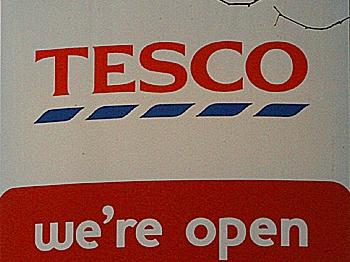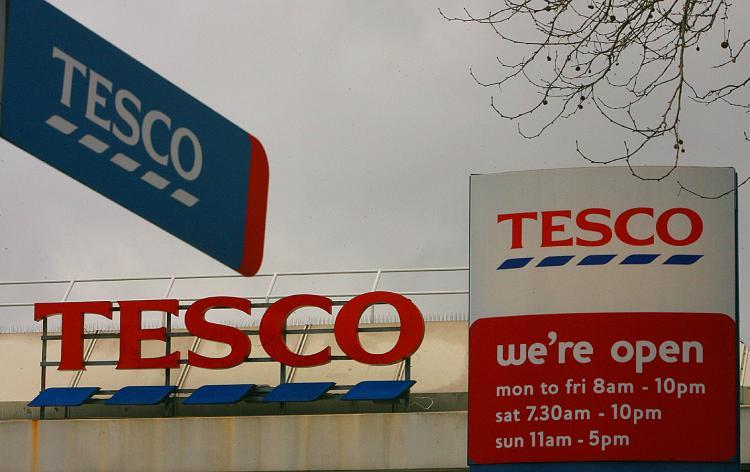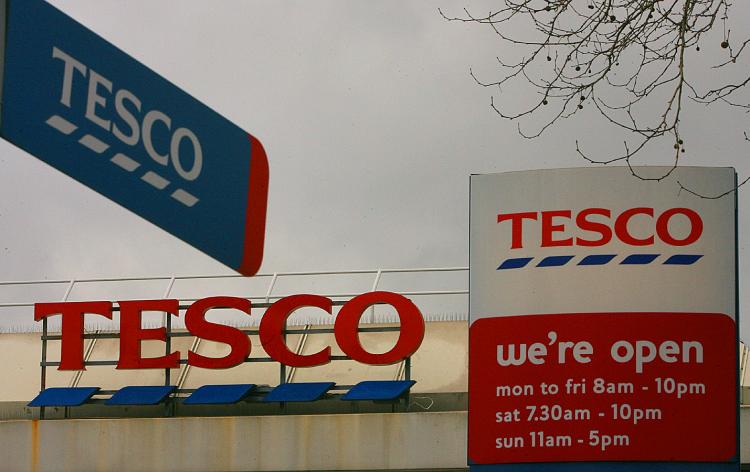For a foreign company, breaking into a saturated market like the U.S. is not easy—even for a company as large as Tesco Plc, the world’s third largest retail chain.
The American consumer is fickle and may change loyalty at a moment’s notice. A fad today may disappear tomorrow, and a favorite product may be gone by the end of the week, as something new and more exciting is always lurking around the corner. Loyalty, as practiced in the good old days, is often a thing of the past.
“The United States is an unusually competitive and cluttered market. It is tough to succeed without a clear and sustainable point of differentiation,” said John A. Quelch, professor at Harvard Business School, in an interview published in Harvard Business School Working Knowledge.
For a food or retail store to go international, market reconnaissance is of prime importance. When buying existing stores, bringing in one’s own people and releasing existing management could have a detrimental effect on the future of the acquisition.
Importing one’s own culture into a foreign market, instead of adopting local practices, often sets one up for failure.
Tesco, the world’s third largest retail chain after Wal-Mart Stores Inc. and France-based Carrefour S.A., has hit a snag after breaking into the U.S. market.
Tesco did not foray unprepared into the American market, but took a similar approach that worked when entering the Eastern and Central European, as well as the Southeast Asian markets. The only country in which Tesco ran into problems was Japan, where it did not gain a strong foothold.
“The company did a serious amount of homework before entering the United States, including sending 50 British executives to live with California families. But it seems the advance team didn’t learn all that it should,” according to the Working Knowledge article.
Tesco has opened Fresh & Easy stores in California, Arizona, and Nevada. They offer about 4,000 different kinds of fresh foods, ready-made meals and products, thinking that the U.S. consumer shops for consumables daily.
The company did not realize that “California is a car culture. Most households undertake a weekly shopping expedition, supplemented with stock-up purchases at convenience stores,” Quelch said.
He went on to say that a Fresh & Easy store is not suitable for an American city at large, although it could work in an inner city where the younger generation might pick up their evening meal on the way home from work. In American suburbs, however, where everyone needs a car to get around, such a concept would never take a foothold.
The American consumer wants to be indulged. The shopper wants to try something before buying it, so the little taste booths in today’s large grocery stores or that little sample may make all the difference in the world. Anything free will draw people into a store, and a coupon is a must so that the consumer assumes a bargain.
Tesco “eliminated discount coupons,” and instead of looking at the existing environment to see what environment people expect, it “decorated in a spare style more suited to a hospital than a food retailer,” according to the Working Knowledge article.
The professor suggested that for a successful foray into the United States, Tesco should have partnered with a U.S. retailer when entering the American market. Another option would have been to hire a market consultant familiar with the location.
Instead, Tesco took its own counsel and so far has not made much headway. It said on its website that everything, starting with the design of the stores, is done by internal talent, and thus it can charge lower consumer prices.
Tesco, in its mid-year results, indicates that the U.S. market is not profitable, with a loss of $150 million, and attributes it to the economic downturn. It predicts that it probably won’t achieve profitability before 2012 or even 2013.
“Full year losses have plateaued, although we do not expect this year’s losses to be materially different to last year,” Tesco stated in its earning release.
Working Knowledge doesn’t think that Tesco should hold onto the U.S. market. “Five years later, Fresh & Easy has not made a dime, and analysts are wondering whether the company should pack up and go home, as so many other British retailers have done before it,” according to the article.
Venturing Into the American Market
Warren Buffet, showing his support for Tesco, said in his 2009 annual letter to shareholders that Berkshire Hathaway had increased its Tesco holdings to 234,247,373 shares at a cost of $1.4 billion, with a present market value of $1.6 billion.
Buffet increased his holdings in Tesco during 2010 and now holds about 242 million of Tesco shares, continuing to show his support.
J. Sainsbury Plc, a major British food retailer, bought 60 stores in three U.S. states—Massachusetts, Maine, and New Hampshire—in 1987. Sainsbury retreated in 2004 from the U.S. market and sold its U.S. holdings to SuperValu Inc. and Dutch retailer Royal Ahold N.V.
“While successful grocery retailers are expanding internationally, the odds are long. Both Sainsbury’s and Marks & Spencer of the United Kingdom have withdrawn from the United States. Wal-Mart tripped up badly in Germany,” Quelch said.
The American consumer is fickle and may change loyalty at a moment’s notice. A fad today may disappear tomorrow, and a favorite product may be gone by the end of the week, as something new and more exciting is always lurking around the corner. Loyalty, as practiced in the good old days, is often a thing of the past.
“The United States is an unusually competitive and cluttered market. It is tough to succeed without a clear and sustainable point of differentiation,” said John A. Quelch, professor at Harvard Business School, in an interview published in Harvard Business School Working Knowledge.
For a food or retail store to go international, market reconnaissance is of prime importance. When buying existing stores, bringing in one’s own people and releasing existing management could have a detrimental effect on the future of the acquisition.
Importing one’s own culture into a foreign market, instead of adopting local practices, often sets one up for failure.
Tesco, the world’s third largest retail chain after Wal-Mart Stores Inc. and France-based Carrefour S.A., has hit a snag after breaking into the U.S. market.
Tesco did not foray unprepared into the American market, but took a similar approach that worked when entering the Eastern and Central European, as well as the Southeast Asian markets. The only country in which Tesco ran into problems was Japan, where it did not gain a strong foothold.
“The company did a serious amount of homework before entering the United States, including sending 50 British executives to live with California families. But it seems the advance team didn’t learn all that it should,” according to the Working Knowledge article.
Stepping Into the Market
Tesco has opened Fresh & Easy stores in California, Arizona, and Nevada. They offer about 4,000 different kinds of fresh foods, ready-made meals and products, thinking that the U.S. consumer shops for consumables daily.
The company did not realize that “California is a car culture. Most households undertake a weekly shopping expedition, supplemented with stock-up purchases at convenience stores,” Quelch said.
He went on to say that a Fresh & Easy store is not suitable for an American city at large, although it could work in an inner city where the younger generation might pick up their evening meal on the way home from work. In American suburbs, however, where everyone needs a car to get around, such a concept would never take a foothold.
The American consumer wants to be indulged. The shopper wants to try something before buying it, so the little taste booths in today’s large grocery stores or that little sample may make all the difference in the world. Anything free will draw people into a store, and a coupon is a must so that the consumer assumes a bargain.
Tesco “eliminated discount coupons,” and instead of looking at the existing environment to see what environment people expect, it “decorated in a spare style more suited to a hospital than a food retailer,” according to the Working Knowledge article.
The professor suggested that for a successful foray into the United States, Tesco should have partnered with a U.S. retailer when entering the American market. Another option would have been to hire a market consultant familiar with the location.
Instead, Tesco took its own counsel and so far has not made much headway. It said on its website that everything, starting with the design of the stores, is done by internal talent, and thus it can charge lower consumer prices.
Tesco, in its mid-year results, indicates that the U.S. market is not profitable, with a loss of $150 million, and attributes it to the economic downturn. It predicts that it probably won’t achieve profitability before 2012 or even 2013.
“Full year losses have plateaued, although we do not expect this year’s losses to be materially different to last year,” Tesco stated in its earning release.
Working Knowledge doesn’t think that Tesco should hold onto the U.S. market. “Five years later, Fresh & Easy has not made a dime, and analysts are wondering whether the company should pack up and go home, as so many other British retailers have done before it,” according to the article.
Venturing Into the American Market
Warren Buffet, showing his support for Tesco, said in his 2009 annual letter to shareholders that Berkshire Hathaway had increased its Tesco holdings to 234,247,373 shares at a cost of $1.4 billion, with a present market value of $1.6 billion.
Buffet increased his holdings in Tesco during 2010 and now holds about 242 million of Tesco shares, continuing to show his support.
J. Sainsbury Plc, a major British food retailer, bought 60 stores in three U.S. states—Massachusetts, Maine, and New Hampshire—in 1987. Sainsbury retreated in 2004 from the U.S. market and sold its U.S. holdings to SuperValu Inc. and Dutch retailer Royal Ahold N.V.
“While successful grocery retailers are expanding internationally, the odds are long. Both Sainsbury’s and Marks & Spencer of the United Kingdom have withdrawn from the United States. Wal-Mart tripped up badly in Germany,” Quelch said.






